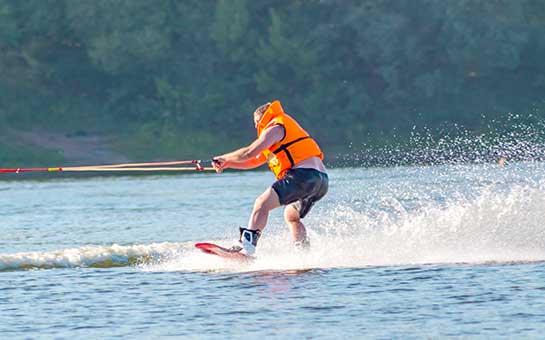Wakeboarding is an acrobatic water sport in which physical and mental stamina are essential. The activity could best be described as water skiing on a surfboard; in fact, when it was invented in the 1980s, it went by the names wakesurfing and “skurfing”. The sport, like any extreme sport, is plagued by risk, but purchasing wakeboarding travel insurance would help soften the financial blow of any medical treatment you might require in case of any accidents or injuries.
Travel Insurance for Wakeboarding
It’s one thing to meet with an accident in your own country, but it’s a totally different issue in a foreign country. Wakeboarding is not an easy sport, and if you plan to indulge while on vacation, there is a significant chance that you could get hurt. Extreme sports enthusiasts love to face danger, but they are also smart enough to have hazardous activity insurance coverage in case things go wrong.
Most insurance companies intentionally exclude extreme sports from their travel insurance policies due to the added risk. So, whether it's a one-time plan or a long-term plan, purchasing wakeboarding travel insurance is essential. This safety net will allow you focus on the thrill of the sport and reduce your worries about possible injury.
Wakeboarding Basics
Participants strap their feet into their board and perform aerial tricks while being towed at high speeds behind a motorboat. The most basic skills necessary are balance and the ability to maneuver the wakeboard. Wakeboarding takes practice to properly master, and a hazardous sports travel insurance plan can aid you in case of accidents.
Wakeboarding is slowly growing in popularity, with millions of Americans taking to the lake every summer to indulge in this exhilarating sport. A wakeboarding trip would go something like this:
- First, the wakeboarder slips on a lifejacket over a wetsuit and puts on a helmet for additional protection.
- The wakeboard size must be directly proportional to the weight of the rider.
- The rider steps onto the board, which has bindings to hold his or her feet in place. The bindings are made of rubber foam boots.
- Wakeboarders gradually emerge from the water as the boat gains speed.
- The powerboat goes up to 25 miles per hour (about 40 kilometers per hour), allowing the wakeboarder to perform gravity-defying stunts. There are a number of tricks the rider can attempt, the most popular bearing tempting names like the tantrum, the scarecrow, the whirlybird, and the crow mobe.
Risks of Wakeboarding
Wakeboarding comes with a list of risks even longer than those of water skiing. The combination of high speeds and the hard surface of the water can be unforgiving if you don’t know what you’re doing. Specialized travel insurance for wakeboarding will help cover any medical expenses in case of an accident. The possible risks include the following.
- Riders thrown out of the speedboat could experience traumatic injuries like concussions and lacerations to the head and neck.
- ACL (anterior cruciate ligament) tears are the most common injury among wakeboarders. Out of all recorded wakeboarding injuries, 67% were ACL tears.
- Wakeboarders have fallen face-first in the water and suffered ruptured eardrums.
- Ankle injuries are common, as the rider’s feet are bound to the board. This puts the most pressure on the rider’s legs during a fall.
- Fractures, dislocations, contusions, and abrasions are all possible wakeboarding-related injuries. The rope could get tangled around the rider in the middle of a trick, pulling taut upon landing and causing significant bodily harm.
- Lacerations on the palms are common for those who wrap the rope around their hand before the boat starts. The violent tug from the boat can easily cut through the skin.
